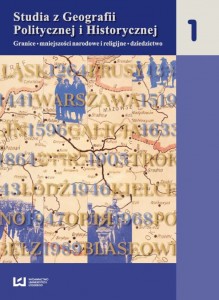The boundaries of the Middle East – past, present and future
DOI:
https://doi.org/10.18778/2300-0562.01.04Keywords:
Middle East, international boundariesAbstract
This article presents a complicated process of shaping national borders in the Middle East. The author demonstrates the fact that present political boundaries were established mainly by the European countries, with the United Kingdom leading the way. National desires, colonial aspirations, imperial needs, all led to the unrealistic picture of the boundaries in the Middle East. The author analyzes the boundaries fallen into the following categories: those in which natural features influenced their location, boundaries which run along old Ottoman Empire administrative boundaries in the form of straight lines, the lines which follow man-made features, and ethnic lines. The aim of this paper is to focus on one of the neglected factors which determine the exact location of international boundaries in the Middle East, namely village boundaries. The examples of Israel-Palestine boundaries as well as the Syrian-Jordan boundary will be used to examine this phenomenon.
References
Agreement between His Majesty’s Government and the French Government respecting the Boundary between Syria and Palestine from the Mediterranean to El-Hama, 1910, London.
Google Scholar
Amadouny V.M., 1995, The formation of the Transjordan – Syria Boundary, „Middle Eastern Studies”, 31 (3).
Google Scholar
DOI: https://doi.org/10.1080/00263209508701068
Biger G., 1984, Geographical and political issues in the delimitation of the northern boundary of Palestine during the Mandate Period, [in:] Shmueli A. et al. (eds.) The Book of Galilee, Haifa.
Google Scholar
Biger G., 1994, An Empire in the Holy Land, New York.
Google Scholar
Biger G., 1995, The Encyclopedia of International Boundaries, New York.
Google Scholar
Blake G.H. and Drysdale A., 1985, The Middle East and North Africa: A Political Geography, Oxford.
Google Scholar
Blake G.H. and Schofield R.N. (eds.), 1987, Boundaries and state Territory in the Middle East and North Africa, Cambridge.
Google Scholar
Brawer M., 1988, Israel’s Boundaries – Past, Present and Future, Tel-Aviv.
Google Scholar
Cumming H.H., 1938, Franco-British Rivalry in the Post-War Near East, London.
Google Scholar
Curzon N., 1907, Frontiers, Oxford.
Google Scholar
Hourani A.H., 1946, Syria and Lebanon: a Political Essay, London.
Google Scholar
Israeli-Jordanian General Armistice Agreement (3 April 1949), 1983, [in:] Rosental Y. (ed.), Documents on the Foreign Policy of Israel, vol. 3, Jerusalem.
Google Scholar
Kliot N., 1987, The Development of the Egyptian-Israeli Boundaries 1906–1986, [in:] Blake G.H. and Schofield R.N. (eds.), Boundaries and State Territory in the Middle East and North Africa, Cambridgeshire.
Google Scholar
Monroe E., 1963, Britain’s Moment in the Middle East 1914–1956, London.
Google Scholar
Newman, D., 1995, Boundaries in Flux: The „Green Line” boundary between Israel and the West Bank – Past, Present and Future, „Boundary and Territory Briefing”, 1 (7).
Google Scholar
DOI: https://doi.org/10.1163/221161497X00179
Prescott J.R.V., 1965, The Geography of Frontiers and Boundaries, London.
Google Scholar
Schofield C. and Schofield R. (eds.), 1994, The Middle East and North Africa – World Boundaries Series, vol. 2, London.
Google Scholar
Wenmer M.W., 1991, The Yemen Arab Republic: Development and Change in an Ancient Land, Boulder.
Google Scholar
Downloads
Published
How to Cite
Issue
Section
License

This work is licensed under a Creative Commons Attribution-NonCommercial-NoDerivatives 4.0 International License.








